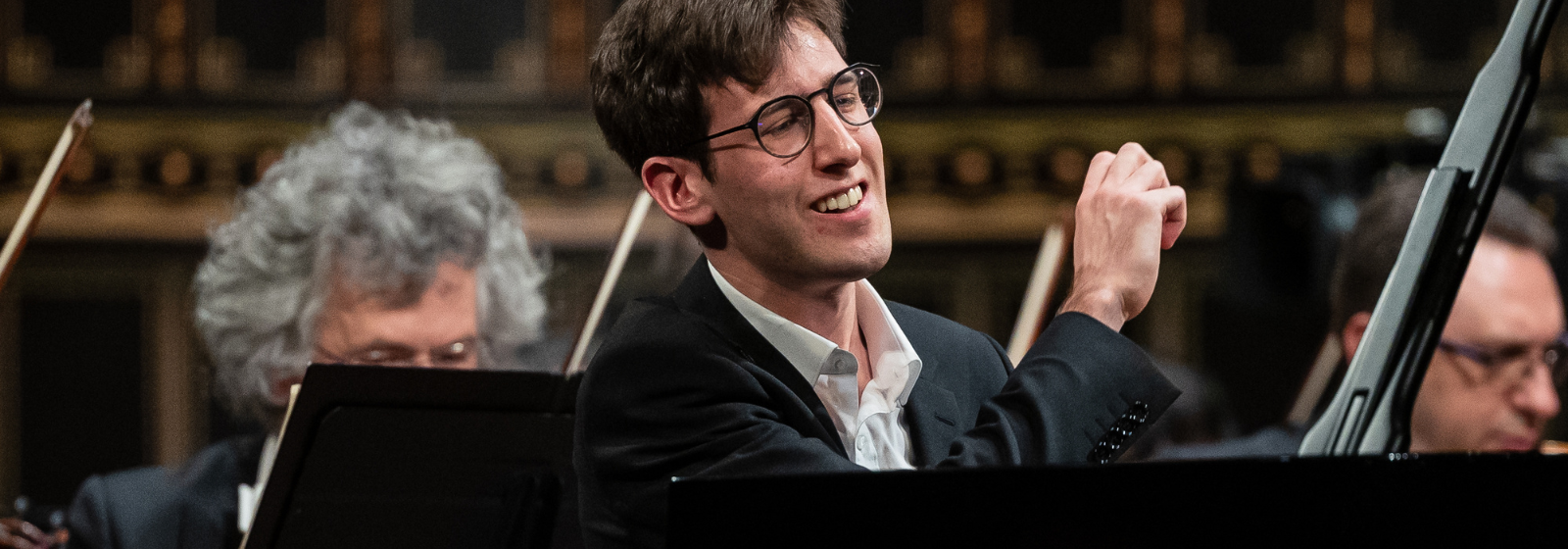
Kecskemét
HAYDN, MOZART, HUMMEL – MIHÁLY BERECZ
Concert of the Hungarian National Philharmonic Orchestra in Kecskemét
WOLFGANG AMADEUS MOZART: Symphony No. 32 in G major, K. 318
JOHANN NEPOMUK HUMMEL: Piano Concerto No. 2 in A minor, Op. 85
***
JOSEPH HAYDN: Symphony No. 39 in G minor, Hob. I:39
WOLFGANG AMADEUS MOZART: Symphony No. 35 in D major (“Haffner”), K. 385
Mihály Berecz piano
Hungarian National Philharmonic Orchestra
Conductor: György Vashegyi
Directed by the Kossuth-Prize winning György Vashegyi, the second concert for the Hungarian National Philharmonic Orchestra’s Ferencsik season ticket will begin with a sinfonia and close with a symphony. Mozart’s Symphony No. 32 in G major bearing Köchel number 318 is, after all, a three-section Italian overture, or sinfonia (commonly known as the Overture in the Italian Style), while the splendid Haffner Symphony is a more expansive, four-movement composition, and one of the composer’s best-known works. Between the two, the virtuoso Mihály Berecz will interpret the rarely heard yet highly evocative Piano Concerto No. 2 in A minor by Hummel – who was a pupil of Mozart – followed by one of Haydn’s rare symphonies in a minor key.
That classic harmony of serenity and melancholy. What is it like when there is a performance of two pieces composed in a minor key book-ended by two compositions in a major key? We will find out in the second concert of the Hungarian National Philharmonic Orchestra’s Ferencsik season ticket, where the Kossuth Prize-winner and chief music director György Vashegyi will conduct two symphonies by Mozart as the opening and closing compositions: one in G major (K. 318), and one in D major (K. 385). The former is also known as the Overture in the Italian Style, as it is actually a three-part, fast-slow-fast opera overture, or sinfonia. The latter is none other than the masterful and rightfully popular Haffner Symphony, which Mozart composed after receiving a commission from the prominent Haffner family in Salzburg. The two works in minor keys to be played in between are the rarely heard yet passionate Piano Concerto No. 2 in A minor by Mozart’s pupil Johann Nepomuk Hummel, performed by the virtuoso Mihály Berecz, followed by Haydn’s 39th symphony in G minor, which represents the turbulence of the Sturm und Drang style and was one of the composer’s few symphonies written in a minor key.

